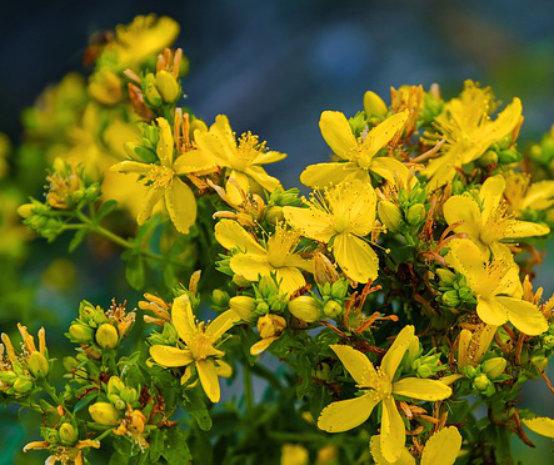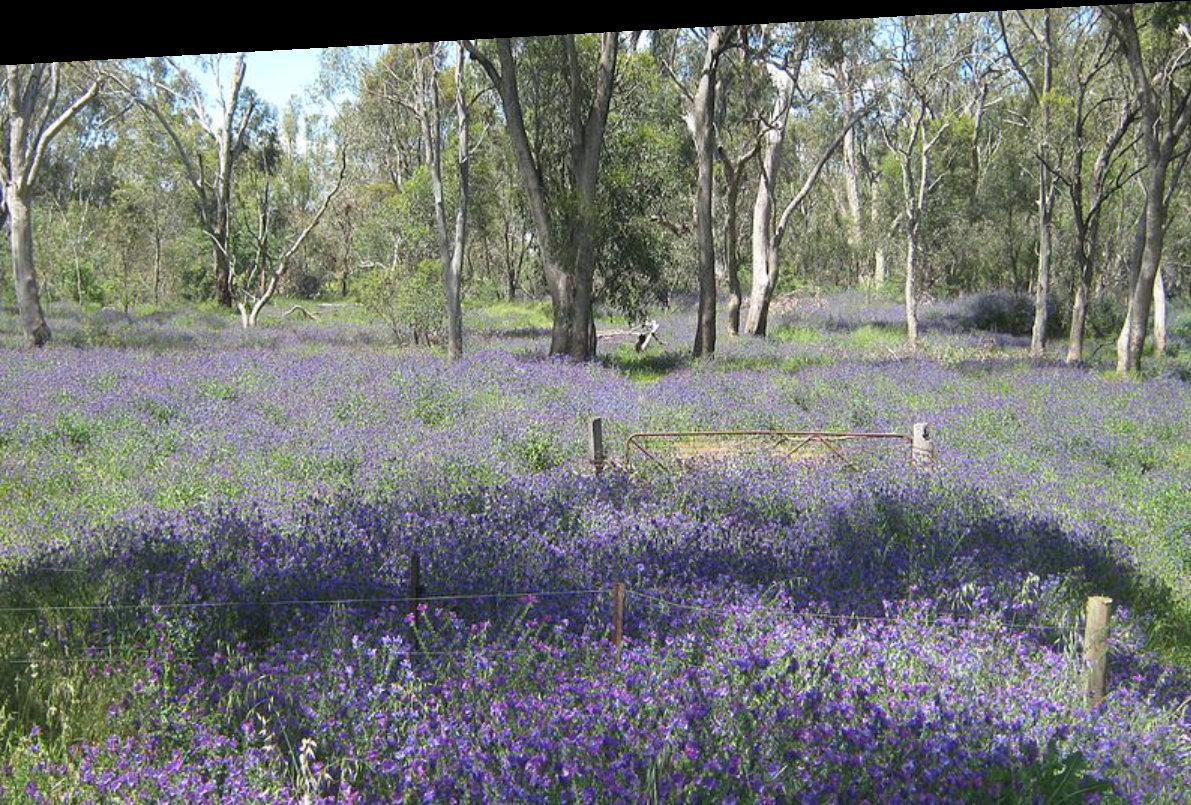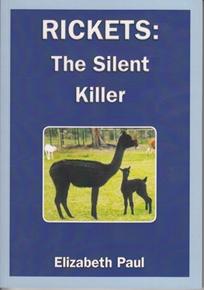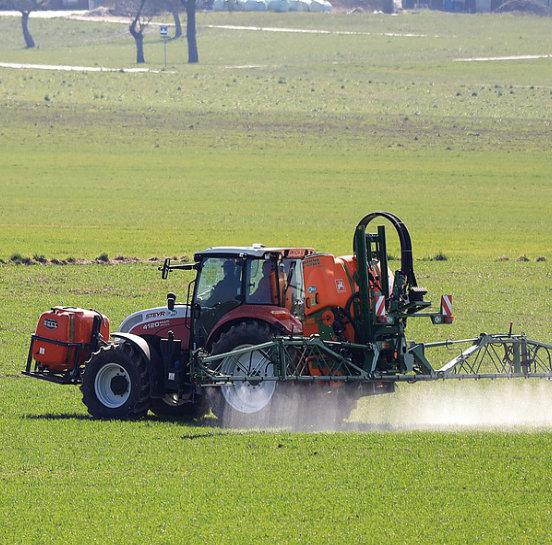
17 minute read
Poisonings in Alpacas: Part 1

Poisonings in Alpacas Part 1 - Pasture and Weeds
Advertisement

By Elizabeth Paul - Erewhon Alpacas

Historically in Australia, large scale poisonings of domes�c farm animals such as ca�le and sheep usually occurred during droughts, when large herds were being walked to new areas looking for feed. Since they were not yarded, it would have been difficult to quickly move a large flock of hungry or thirsty animals on from undesirable grazing areas or contaminated water sources before losing a number from poisonings. Alpacas are usually kept on rela�vely small acreages and are not usually walked off farm in large groups. Their feedstuffs and water supplies are more or less carefully monitored, so large scale poisonings of the type above are less likely. Nevertheless, they are bought, sold and agisted around the country, and there is poten�al for poisonings on farm from noxious weeds, pasture, and garden plants. The two most well known and most important types of poisoning in alpacas are ryegrass staggers and facial eczema. In both of these types it is not the plant itself which is toxic, but rather the toxins coming from fungus growing on the plants. RYEGRASS STAGGERS
Ryegrass staggers is caused by an endophyte fungus, Acemonium lolii which is o�en applied to the grass seed to help reduce insect a�ack and therefore increase plant growth rates. The fungus produces toxic spores which accumulate around the base and seed heads of the grass. In
Ragwort

humid weather, or when the pasture is new ie short, or eaten down low, or seeding, the toxins from the mass of spores may overwhelm the animal’s nervous system. The symptoms are head nodding, staggering, injuries due to loss of coordina�on, inability to rise, and loss of condi�on. The animal must be taken off the affected pasture into dry yarding and fed only dry hard feed and “old” hay, as freshly cut hay/greenstuff from the same paddock is s�ll toxic. The animal may be supported with various nutri�onal supplements, but even if it recovers, it may always show slight nodding/incoordina�on, especially when under stress. Animals vary in their response and some may be more resistant than others to the effects of the toxin. There are low/no endophyte varie�es, and mixed species pastures would have fewer problems than pure ryegrass. Note endophytes on other grasses may also induce staggers reac�ons.
FACIAL ECZEMA
Facial eczema is the second important fungal toxin disease. It is more common in New Zealand, but has occurred in parts of Australia as well, par�cularly in irriga�on areas. It affects all grazing species but camelids and deer are most strongly affected. The fungus which causes FE is called Pithomyces chartarum. The spores contain a toxin called sporidesmin, a potent liver toxin which also damages the bladder, and reduces milk yield. It causes photosensi�za�on by blocking the bile ducts, which has the effect of pu�ng bile salts into the system; the animal becomes jaundiced and then
develops reddening, irrita�on and sloughing of exposed or light coloured skin areas, such as white faces or patches. The fungus produces more spores in dull cloudy, humid weather, and the spores mass in the dead li�er and lower down on the grasses. This is less of a problem when the grass is longer or with light grazing pressure, but when feed is short or the animals eat the pasture down too low under these condi�ons they will ingest a higher spore load. Affected animals must be shedded and supported with zinc supplementa�on. Again, animals vary in their response, some may die quickly, others may be less obviously affected ini�ally but show decreased produc�vity or die later on when other stresses are involved, such as breeding. Control of FE is best achieved with regular pasture spore counts in areas known to have this problem, and no�ng when likely weather condi�ons occur. Stock can be moved off pasture, and/or have zinc supplementa�on added to their diet. Note that other weeds also cause photosensi�za�on, in par�cular Paterson’s Curse, ragwort, heliotrope and St Johns Wort.
GRASS TETANY
This is caused by a lack of magnesium, which produces severe nervous symptoms, and animals may have injuries due to incoordina�on, or go into convulsions and die quickly. Affected animals, par�cularly cows are o�en found dead in the paddock with signs of threshing around them. Mature lacta�ng mothers are most suscep�ble due to the drain of their magnesium levels through milk produc�on. It is more of a problem on grass dominated pasture with lush new growth that is low in magnesium. Legume dominant pastures have more magnesium available and are less of a risk. A badly affected alpaca is difficult to treat and may not survive. It must be removed from the pasture, a difficult procedure in itself as the alpaca is highly stressed, and shedded in a quiet place with as li�le disturbance as possible. It may need to be sedated for a while as it will react violently to ordinary outside s�muli such as a barking dog or revving engine. It also poses a danger to the handler if it jumps wildly around or goes into convulsions. There are ca�le and sheep mineral infusion packs available which can be used to replace magnesium, but a tetany animal needs long and careful nursing if it is to recover. Preven�on of grass tetany includes filling stock up a bit with good quality hay before le�ng them on to a new paddock, and bringing them off it a�er a few hours, repeated over a few days, thus allowing their gut flora to adjust to the new growth. Ca�le may use magnesium licks, but alpacas are less likely to do so. Soil tes�ng and pasture species should be inves�gated to help correct acidity, major deficiencies and seasonal nutrient availability.

St John’s Wort

PEM - polioencephalomyeli�s. A PEM event occurs when the supplies of thiamine, vitamin B1 to the brain and CNS are disrupted by toxins such as lead, or thiamine analogues or destroyed by the enzyme thiaminase. The animal may exhibit odd symptoms, such as head shaking, head pressing, having an “odd” or “stupid” look on its face, or randomly jumping sideways. It can go blind very quickly, which may show up as “ star gazing”, ie standing s�ll with nose in the air and head �lted to one side; or pacing along a fenceline on its own, using the fence as a touch guide. It may stop at the corner but s�ll keep trying to walk on. In later stages breathing is severely depressed. This is more obvious in a freshly shorn alpaca, where the ribs can be seen during deep and slow inspira�on. Treatment involves immediate and con�nuous injec�ons of large doses of soluble B1 un�l improvement is seen, which may need 200mls or more. Some alpacas with PEM have been caught in �me, when owners have seen and recognized the early symptoms and been able to start treatment immediately, but in most cases if the alpaca is already blind it is permanent. I have personally been involved with one grass tetany case and several PEM cases on friends’ farms. The grass tetany alpaca was nursed for 3 weeks and survived. Of the PEM cases, 2 physically survived but were le� blind. Another case was a large female, also blind, who had to be put down, as she was wrecking fences and could not be controlled. One of my own females presented as very ill, with high temperature, and tes�ng showed she was suffering from severe kidney problems. It was decided that she must have been poisoned, but the source was unknown. She ul�mately survived a�er intensive treatment but was later found to be blind, so she was probably also a PEM case. She was put back out with the herd, and managed for a while un�l a burst of bad weather, when she simply sat down and died presumably of hypothermia.
Plants produce toxic chemicals either to discourage grazing animals (no ma�er how many legs they may have) or simply as storage of metabolic waste chemicals which they cannot excrete as easily as animals do. Some�mes the storage chemical is not toxic itself, but releases the toxic principle when broken down in the acidic condi�ons of the gut, or by the gut flora. The most important ones ie which cause rapid death include alkaloids, glycosides, oxalates, nitrate/nitrite, HCN/prussic acid and 1080/monofluoroacetate. There are also tannins, saponins and other chemicals which may cause allergenic reac�ons, scouring, anaemia or photosensi�za�on. Many of these chemicals are bi�er to the taste, but stock will eat almost anything if they are hungry enough. Toxicity effects may be immediate or delayed, and vary depending on plant lifestage, seasonal differences, or whether the plant is fresh, or wet, or dried in hay. Weeds may also concentrate different minerals to toxic levels, eg copper, as well as deple�ng the soil and depriving other plants to their own advantage. The following weeds are probably the most significant, being most common and toxic to most stock. BRACKEN - and assume all ferns. Pteridium esculentum
Fam Dennstaed�aceae
Bracken fern has long, tough, wiry stems, underground creeping rhizomes and dry, typical fern like foliage to about 1m in height. It is commonly seen along roadsides, under trees, on waste ground, and can invade pastures. Heavy bracken infesta�ons cut down light and nutrients for useful pasture plants as well. The most poisonous parts are the young fronds, called fiddleheads, along with the rhizomes or roots. Bracken causes both acute and chronic poisoning condi�ons and is carcinogenic. The poison affects the blood’s clo�ng ability and depresses bone marrow ac�vity, causing the animal to become suscep�ble to other infec�ons. In mature ca�le, and some�mes sheep, it causes redwater, a hemorrhagic condi�on of the kidneys; in horses and pigs it causes a nervous condi�on like staggers. Uncontrolled bleeding and suscep�bility to other infec�ons are features in ca�le. As bracken poisoning also depresses bone marrow func�on, ca�le can die up to 6 weeks a�er exposure, from other diseases. Bracken fronds dried in hay can also cause poisoning. Milk products from cows grazing bracken are also carcinogenic. Other fern species are also thought to be poisonous.
Bracken Capeweed


Source: h�ps://en.wikipedia.org/wiki/Arctotheca_calendula#/media/ File:Arctotheca_calendula_2.JPG
CAPEWEED - and assume similar garden daisy types, also Amaranthus spp and young green oats. Arctotheca calendula
Family Asteraceae
Capeweed usually grows as a flat rose�e of broad leaves with yellow and black daisy type flowers. Capeweed has high levels of nitrate, which is broken down by ruminants to produce nitrite, which is then converted to ammonia, and passed out in the form of urea. This system can be overwhelmed with too much nitrate, leading to an excess of nitrite, which binds to haemoglobin forming methaemoglobin, and thus starving the animal of oxygen. The blood of affected animals is dark, even black. As a flatweed, capeweed may not be such a problem if there is plenty of other food available. However in dull cloudy weather it grows to a standing herb, making it more easily accessible, and the nitrate levels are much higher in dull condi�ons. Also nitrate levels may be higher shortly a�er a drought break. Deaths usually occur quickly but nitrate toxicity may become a chronic condi�on. I have had an alpaca bought from SA who ate up flat capeweed plants in front of us, and then proceeded to dig up and eat the tap root as well, clearly he was used to living with capeweed back home.

Family Asteraceae (prev Compositae)
This is a declared noxious weed in cooler high rainfall areas, par�cularly in southern Victoria, Tasmania, parts of SE NSW and South Australia. It is poisonous to all stock, and a par�cular toxic contaminant of hay. Na�ve to Europe, it is associated with disturbed ground, and dense infesta�ons can completely smother an area. Ragwort is a biennial or short lived perennial herb, to 1.5m height, with small bright yellow daisy type flowers, and deeply divided leaves. The stems are green, ribbed, and reddish at the lower ends. The daisy like flowers are produced in terminal clusters. They produce rose�es in their first year then assume a more upright appearance in the second. The young plant looks very similar to tansy, (which is even more poisonous) except that the ragwort flowers have ray florets and look more like a miniature sunflower, while the tansy flowers are similar to billy bu�ons. All parts are poisonous, especially to horses and ca�le, causing poor appe�te, cons�pa�on and jaundice, photosensi�za�on and death by liver damage. Symptoms can be latent, appearing up to several months a�er inges�on. Ragwort is also poisonous when dried in hay and most poisonings appear to come from contaminated hay. The juices/pollen may cause allergenic problems to humans as well, and gloves/mask should be worn if doing much handpulling of individual plants. Echium plantagineum Family Boraginaceae
Patersons Curse is a proclaimed noxious weed but is also used as drought fodder for sheep on marginal land. It contains pyrrolizidine alkaloids, causing liver damage, jaundice, photosensi�vity and toxic copper build–up. It is more serious for horses and pigs, ie monogastric animals. Effects may be delayed un�l the second season a�er grazing, when the horse becomes dull, listless, loses appe�te, and liver func�on becomes more compromised resul�ng in eventual death. Sheep and goats will graze it readily with less serious effects, and may be used to clear areas, but autopsies show that they also have some liver damage. Alpacas are known to eat Patersons Curse but there is li�le informa�on on how it affects them.
Image Source below: Ypna at English Wikipedia h�ps:// commons.wikimedia.org/wiki/File:Echium_plantagineum_field.JPG

Patersons Curse

One Leaf CAPE TULIP - and assume other members of Iris family and Lily family Moraea flaccida( prev Homeria)
Family Iridaceae
This noxious weed.is a common pasture and roadside weed in drier areas. It has one long slender pale green leaf arising from a corm, and a sixpetalled orange flower with yellow centre, occasionally seen as an all yellow form. All parts of the plant are extremely poisonous, even when dry, causing acute vomi�ng and diarrhoea, eventually paralysis and death. Toxic to ca�le and sheep and very likely to alpacas.
AMARANTHUS - Red root pigweed and other amaranth species, Alligator Weed. Amaranthus retroflexus
Family Amaranthaceae
Red root pigweed contains both nitrate and oxalate and is known to have caused alpaca deaths, but I am not sure whether this occurred in Australia or the US. There are several species, including garden varie�es and a na�ve species called boggabri. Dried amaranth material is �ll toxic, so it can be a hay contaminant as well. Alligator weed has moderate amounts of oxalates and accumulates heavy metals, and is suspected of causing photosensi�za�on in calves and lambs that have grazed it.

Horsetails

HORSETAILS Equisetum arvense
Family Equisitaceae
Equisetums are a declared noxious weed. They are a nonflowering plant which has a creeping rhizome (root) and long needle like leaves. All horsetails are very poisonous to stock, especially horses, and dried horsetail material can also contaminate hay.
SUGAR GUM and Manna Gum Eucalyptus spp.
Family Myrtaceae
New young leaves that grow fast eg a�er bushfires are poisonous especially when wet, as the extra moisture enables faster absorp�on. Most deaths have occurred in sheep during drought condi�ons.

Amaranthus

BLUE GREEN ALGAE
Blue green algae are single celled plants which thrive in warm, stagnant, low oxygen content water bodies. The algae “ bloom” in a massive growth spurt and then die, releasing toxins called cyclic polypep�des into the water which can be fatal to drinking stock, or dogs swimming in it, and humans if they are unwise enough to swim in or drink the water. Mass poisonings of wild animals at waterholes have been recorded caused by this problem. The pond may become a sickly green colour (or other colours, mostly red) smelly, with scummy edges consis�ng of cellular remains of dead algae. Poisoned stock will die, but the rest may be saved if removed from the source as soon as possible. Ponds may need flushing, or for a small pond, aera�on with a small pump and hosing can be used to quickly reduce the bloom. Vegeta�on belts grown around part of the water hole may help to reduce runoff contamina�on. 49
Sprayed Weeds Be aware that weedicides o�en make the weeds more a�rac�ve and palatable to stock, and spray/grazing techniques are used mostly with sheep and goats, to clean up the weeds a�er a specified withholding period. This would be very inadvisable with alpacas. Ca�le have been known to break through fences to get at recently sprayed paddocks some�mes with fatal results.
Poisonous fungi and toadstools are also likely causes of poisoning but would be almost impossible to iden�fy as such. Preven�on Of Weed Spread As part of their invasive techniques, weeds o�en seed profusely, or have burrs, or grow from vegeta�ve pieces without seeds at all. The seeds or pieces are carried on to a property by new stock, vehicles and farm machinery, hay bales, feed bags, or boots. Hay should be checked for presence of weed species like ragwort, bracken and Paterson’s Curse, and also checked for mouldy or smelly hay. New stock to a property should be quaran�ned for at least 2 weeks, not only to be checked for illness/parasites, but also to be sure of them excre�ng seeds of poten�al weeds from their previous loca�on. They may need shearing as well, to reduce the amount of seeds clinging to their fleeces. Immediately before le�ng the new group out, fill them up a bit with a feed of plain hay so they are not too desperately hungry to try a new pasture, and give �me for their gut flora to adjust to the different types of feed. Resident alpacas might be well aware that bush ‘x’ in the corner is not nice to eat, but a new group may not be so savvy, and might eat more of it than is wise. Note that many weed and/or pasture poisoning problems are caused or exacerbated by disadvantageous farming prac�ces which have led to degraded soils, unbalanced nutrient profiles and prolifera�on of weeds. Apart from being poisonous, heavy weed burdens contribute to lost agricultural revenue by also compe�ng with more favoured pasture species, contamina�on of food/hay crops, fouling machinery and reducing fleece value. Improving pastures by soil tes�ng for acidity, salinity and deficiency problems; soil aera�on; applica�on of appropriate fer�lizers and trace minerals; and considera�on of pasture mixes, stocking rates, tree belts and weather condi�ons, will have a longer term impact in reducing some of these problems than just “nuking the weeds” which adds a further problem to the environment.
Material drawn from the AAA Poisonous Plants List compiled by E. Paul 20/04/07, which is largely based on “Poisonous Plants of Australia” by Selwin L. Everist Revised Ed 1981 (1st pub 1974) Angus & Robertson.

The Alpaca Colour Key was $30 now $25. Pair Only Handbook of Health and Rickets was $55 now $50. Set of 3 was $80 now $75. No GST on books.


All Plus P & P
Limited copies of Elizabeth Paul’s books on Alpaca Coat Colour gene�cs and numerous alpaca health issues, with a par�cular emphasis on Rickets, are s�ll available. These books bring together informa�on and experiences of many Australian alpaca breeders in concisely wri�en formats illustrated with a wealth of colour photographs. With special Christmas 2020 price reduc�ons, they would make great gi�s for any alpaca owner. Contact: Elizabeth at erehwonalpacas@gmail.com










